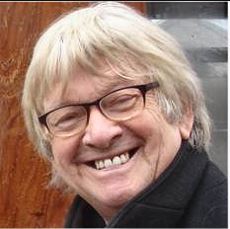Quite rightly and not before time a number of plinths that supported some abominable racist representatives of British imperialism are now vacant. Whilst the statue of Bristol’s slave trader Edward Colston has been dredged up from Bristol Harbour for its second coming as a museum exhibit, Ray Barnett, head of collections and archives at Bristol City Council, said. “The ropes that were tied around him, the spray paint added to him, is still there so we’ll keep him like that.”
One person who would be a prime candidate for a vacant plinth or even a new one, would be Joseph Bologne, Chevalier de Saint-Georges, a classical composer, virtuoso violinist, and conductor of the leading symphony orchestra in Paris as well as a champion fencer and athlete. Of French nationality he was born on 25 December 1745, son of a wealthy Guadeloupe planter and slaver, George Bologne, and ‘his’ African slave Nanon (Anne). Two years later Bologne was unjustly accused of murder and fled to France with Nanon and Joseph to prevent them being sold. After two years he was granted a royal pardon and the family returned to Guadeloupe. However, France’s Code Noir, or “Black Code,” imposed harsh restrictions on freedom of religion, marriage and commerce for black slaves and nonslaves living in the colonies. So in 1753 Bologne took Joseph to France permanently where he had an excellent boarding school education. Aged 13 he became a pupil of La Boëssière, a master of arms, and excelled in all physical exercises, especially fencing. He was such an accomplished swordsman that he was made a member of the king’s guard with the title Chevalier de Saint-Georges. But it was as a musician and composer that he shot to fame.
According to Charlie Connelly writing about Joseph Bologne in The New European (4-10 June). “By 1769 he had become such an accomplished violinist with the Parisian orchestra Le Concert des Amateurs that he was elevated to concert master. Three years later he became a soloist and in 1773 Bologne was appointed director of the orchestra. The influential L’Almanach Musical wrote in 1775 that the orchestra under Bologne’s direction was “the best orchestra for symphonies in Paris and perhaps in Europe”.
“His own brilliance as a performer was such that leading contemporary composers wrote violin concertos specifically for him and he filled concert halls and salons wherever he went, often performing his own compositions. Before long he was tutoring, performing for and performing with Marie Antoinette at the palace in Versailles.”
It was here that he met Mozart who was visiting Paris with his mother, who died in the city suddenly in 1778. It is reported that the two did not ‘get on’ although Mozart was influenced by Bologne’s music.
Joseph Bologne had also visited London from time to time, partly according to Connelly to perform concerts and recitals, but mostly to lend his support to the increasingly powerful anti-slavery lobby in England. He met regularly with abolitionists like William Wilberforce and John Wilkes and helped in translating English abolitionist pamphlets into French for the Société des amis des Noirs, the Society of Friends of Black People, that he had helped to establish in France.
He was in London when the French revolution broke out on 14 July 1789 and returned to France where, although he had moved in royal circles, he sided with the Republican cause. In 1791, he was made captain of the national guard of Lille and a year later, an all-black regiment was formed with Bologne, Chevalier de Saint-Georges as its colonel. It was called the Légion de Saint-Georges, from which he even set up a small orchestra.
In 1794 slavery was abolished by the Republic’s National Convention (although Napoleon revoked the decree in 1802). At the time Bologne was in prison, without charge, but was subsequently released by the Committee of Public Safety, who found that he had been imprisoned without cause. However, his army command was not restored and he returned to civilian life and died two years later in 1799 aged 53.
Although many of his operas have been lost, his chamber and instrumental music lives on, but sadly are underperformed in the concert halls of Europe and elsewhere. As for a statue, obviously Paris is an ideal location where at least there is a street named after him. So would London which he visited from time to time. Here he is best remembered for a fencing demonstration organised by the Prince of Wales in 1787 at Carlton House, with Mademoiselle d’Eon who lived the first half of his life as a man and the second half as a woman. Carlton House no longer exists, but it was located in the present day Carlton House Terrace in the St James’s district in the city of Westminster. Surely it would be an ideal spot for a statue of the great Black musician, classical composer, virtuoso violinist, champion fencer, boxer, dancer and campaigner for the abolition of slavery, who today would have been at the vanguard of the Black Lives Matter Movement.
You can hear his violin concertos at: https://www.youtube.com/watch?v=kmiuh_OL2Zg
